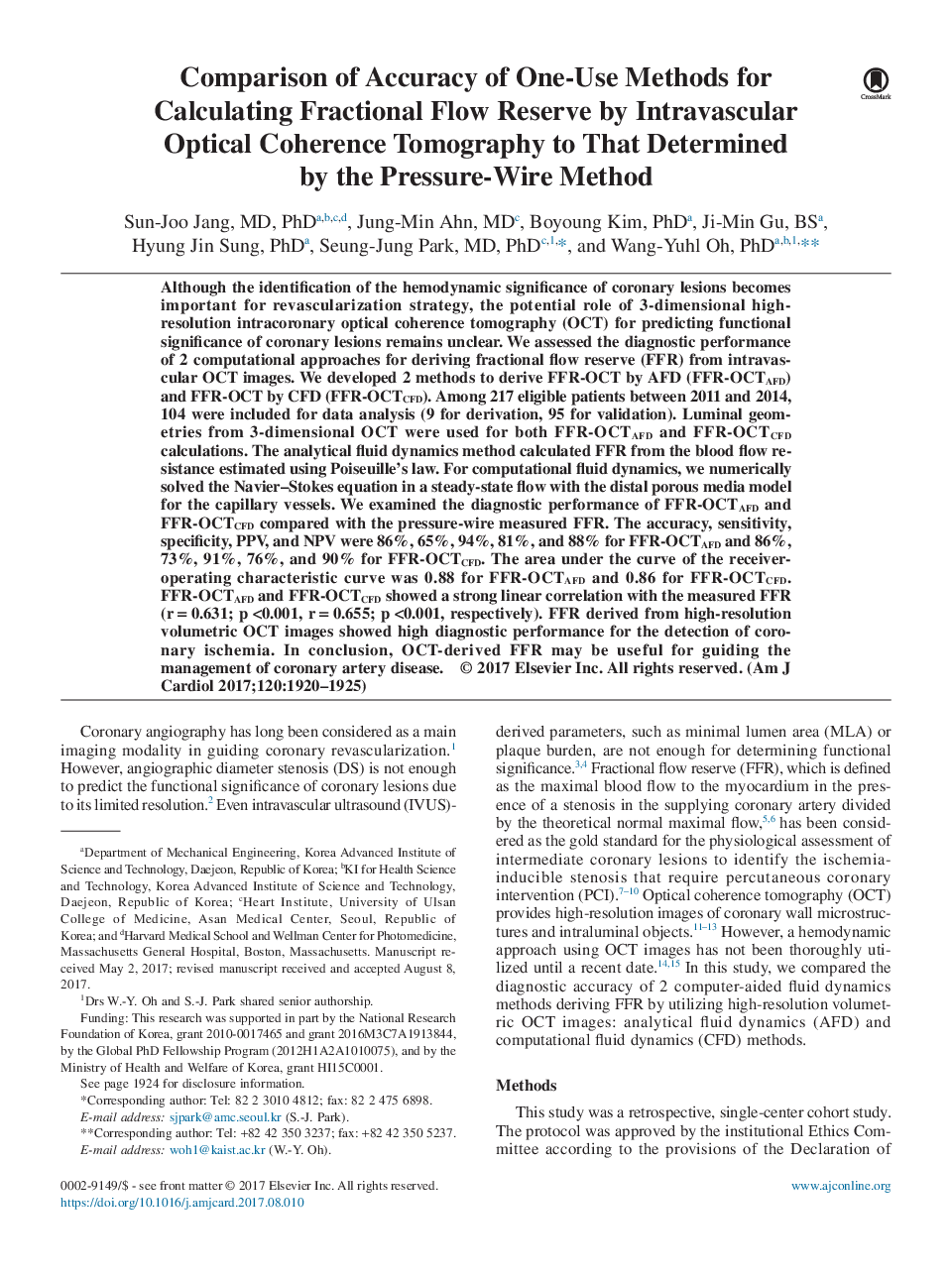| کد مقاله | کد نشریه | سال انتشار | مقاله انگلیسی | نسخه تمام متن |
|---|---|---|---|---|
| 8651641 | 1572072 | 2017 | 6 صفحه PDF | دانلود رایگان |
عنوان انگلیسی مقاله ISI
Comparison of Accuracy of One-Use Methods for Calculating Fractional Flow Reserve by Intravascular Optical Coherence Tomography to That Determined by the Pressure-Wire Method
دانلود مقاله + سفارش ترجمه
دانلود مقاله ISI انگلیسی
رایگان برای ایرانیان
موضوعات مرتبط
علوم پزشکی و سلامت
پزشکی و دندانپزشکی
کاردیولوژی و پزشکی قلب و عروق
پیش نمایش صفحه اول مقاله

چکیده انگلیسی
Although the identification of the hemodynamic significance of coronary lesions becomes important for revascularization strategy, the potential role of 3-dimensional high-resolution intracoronary optical coherence tomography (OCT) for predicting functional significance of coronary lesions remains unclear. We assessed the diagnostic performance of 2 computational approaches for deriving fractional flow reserve (FFR) from intravascular OCT images. We developed 2 methods to derive FFR-OCT by AFD (FFR-OCTAFD) and FFR-OCT by CFD (FFR-OCTCFD). Among 217 eligible patients between 2011 and 2014, 104 were included for data analysis (9 for derivation, 95 for validation). Luminal geometries from 3-dimensional OCT were used for both FFR-OCTAFD and FFR-OCTCFD calculations. The analytical fluid dynamics method calculated FFR from the blood flow resistance estimated using Poiseuille's law. For computational fluid dynamics, we numerically solved the Navier-Stokes equation in a steady-state flow with the distal porous media model for the capillary vessels. We examined the diagnostic performance of FFR-OCTAFD and FFR-OCTCFD compared with the pressure-wire measured FFR. The accuracy, sensitivity, specificity, PPV, and NPV were 86%, 65%, 94%, 81%, and 88% for FFR-OCTAFD and 86%, 73%, 91%, 76%, and 90% for FFR-OCTCFD. The area under the curve of the receiver-operating characteristic curve was 0.88 for FFR-OCTAFD and 0.86 for FFR-OCTCFD. FFR-OCTAFD and FFR-OCTCFD showed a strong linear correlation with the measured FFR (râ=â0.631; pâ<0.001, râ=â0.655; pâ<0.001, respectively). FFR derived from high-resolution volumetric OCT images showed high diagnostic performance for the detection of coronary ischemia. In conclusion, OCT-derived FFR may be useful for guiding the management of coronary artery disease.
ناشر
Database: Elsevier - ScienceDirect (ساینس دایرکت)
Journal: The American Journal of Cardiology - Volume 120, Issue 11, 1 December 2017, Pages 1920-1925
Journal: The American Journal of Cardiology - Volume 120, Issue 11, 1 December 2017, Pages 1920-1925
نویسندگان
Sun-Joo MD, PhD, Jung-Min MD, Boyoung PhD, Ji-Min BS, Hyung Jin PhD, Seung-Jung MD, PhD, Wang-Yuhl PhD,